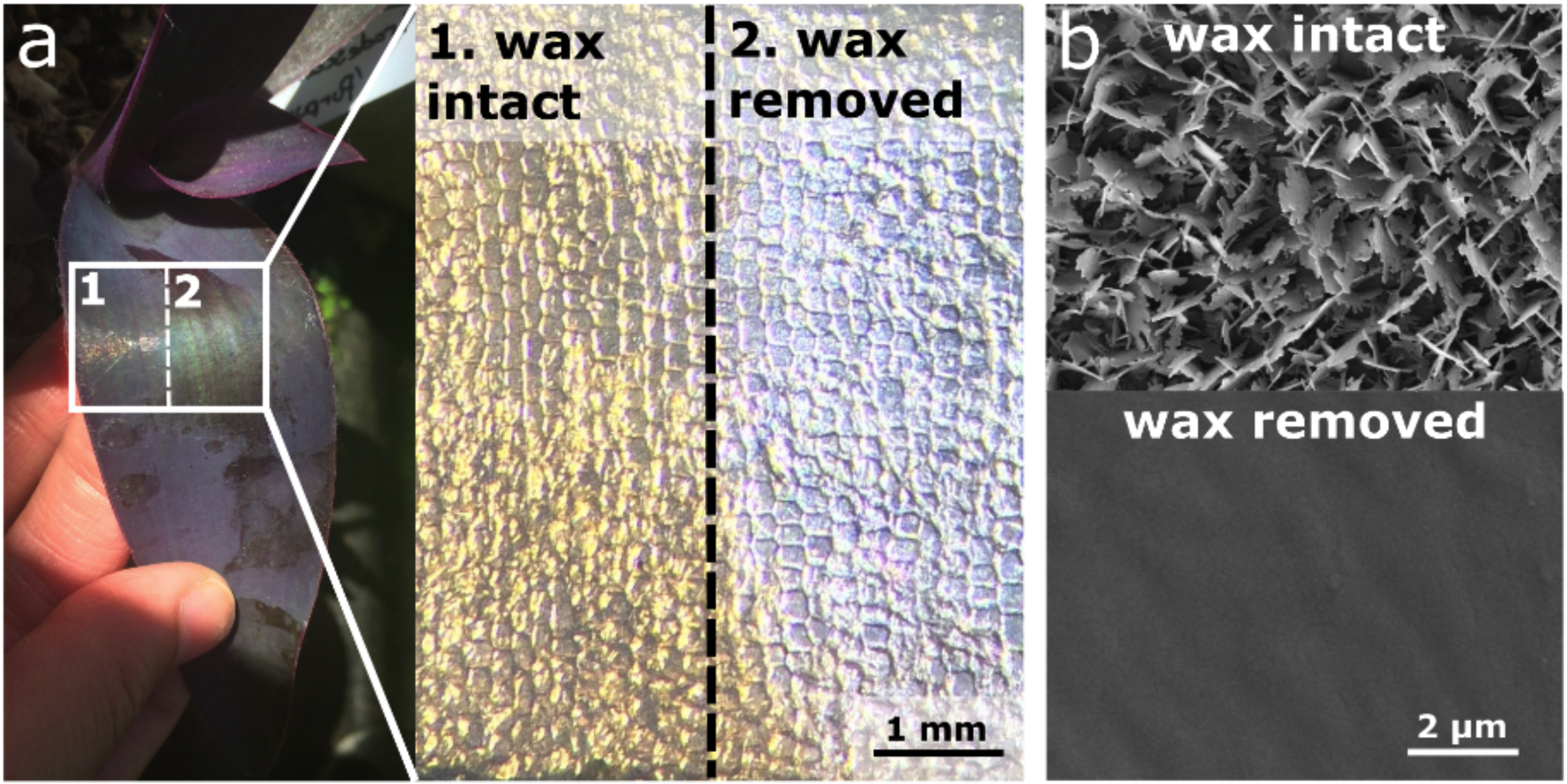Colour in nature can be used for a variety of different reasons. In plants, colour is used for optimisation of light collection for photosynthesis, for photoprotection, or for communication to animals, either to attract or repel them. The function of colour, and the mechanism used to create it, can not only vary between different species, but also between different parts of the plant. Because of the large variety of different functions of colour in plants, there is also a large variety of mechanisms to create colour, each tailored to suit its specific purpose. In the Bio-Inspired Photonics group, we investigate the appearance of structural colour across a variety of plants. We assess the properties of these photonic structures, and we investigate their evolution across the plant kingdom.
In flowers, colour is often used to attract pollinators. Some flowers create attractive colours by growing striated structures on their petals. These structures act as diffraction gratings which reflect short wavelength (blue/UV) light. One example of this can be found in petals of Grielum humifusum (Figure 1), which reflect UV light to attract bees (Moyroud et al, 2017). The same mechanism has been observed for a large variety of flowers from different taxa, which suggests that such ridges have evolved iteratively in separate lineages of flowers (Moyroud et al, 2017).

Figure 1. a) Photograph showing a flower of Grielum humfusum. b) A scanning Electron Microscopy image shows a striated surface on the adaxial cuticle of the petals, when looking at them in top view. c) Transmission Electron Microscopy shows the cuticular ridges in cross section. The ridges form a diffraction grating, that reflects UV light. Figure adapted from (Moyroud et al, 2017).
Leaves have very different reasons to create colour. They often use photonic structures for photoprotection. Short wavelength light (UV and blue) can be harmful for the photosynthetic organs in leaves. Many shade dwelling plants are poorly equipped to withstand direct sunlight. However, even when growing in relatively shaded areas they will sometimes be exposed to intense light. For example, plants growing in the understory of a forest will be adapted to shade, but sunlight will still occasionally filter through the canopy. Therefore, these plants have developed a mechanism to reflect short wavelength light. Plants like Microsorum thailandicum (Steiner et al, 2018) grow helicoidal multilayer structures that reflect light in the short wavelength regime.
In contrast to the photoprotective mechanism found for leaves that reflect short wavelength light, and therefore often have a blue appearance, leaves from Tradescantia pallida have a golden shine. This long wavelength reflectance comes from a disordered arrangement of wax platelets on the leaves, the function of which remains to be determined (van de Kerkhof et al, 2020).

Figure 2. a) Whereas many plants use structural colour to reflect harmful UV light, leaves of Tradescantia pallida ‘purpurea’ reflect a red-shifted golden colour. This colour stems from the presence of a wax layer covering the leaves. When the wax is removed, the golden colour disappears. b) When studying this wax layer with Scanning Electron Microscopy, it appears that the wax is distributed as a layer of disorderd wax platelets. For leaves which have the wax removed, we see that the surface of the leaves is smooth and flat. Figure used from (van de Kerkhof et al, 2020).
Above, we have highlighted some of our work on structural colour in flowers and leaves. However, our work on structural colour extends to any part of the plant kingdom. For example, we work on the appearance and evolution of structural colour in fruits from land plants, but we also investigate photonic structures in algae (Chandler et al, 2015).
In addition to the optical properties of photonic structures in plants, we also work on determining their chemical composition. Structures found in cell walls, such as in the case of Microsorum, are often composed of cellulose. However, structures found in different plants can have a different composition of cellulose. By combining chemical extraction with imaging techniques, we can elucidate the chemical composition of the observed photonic structures.
